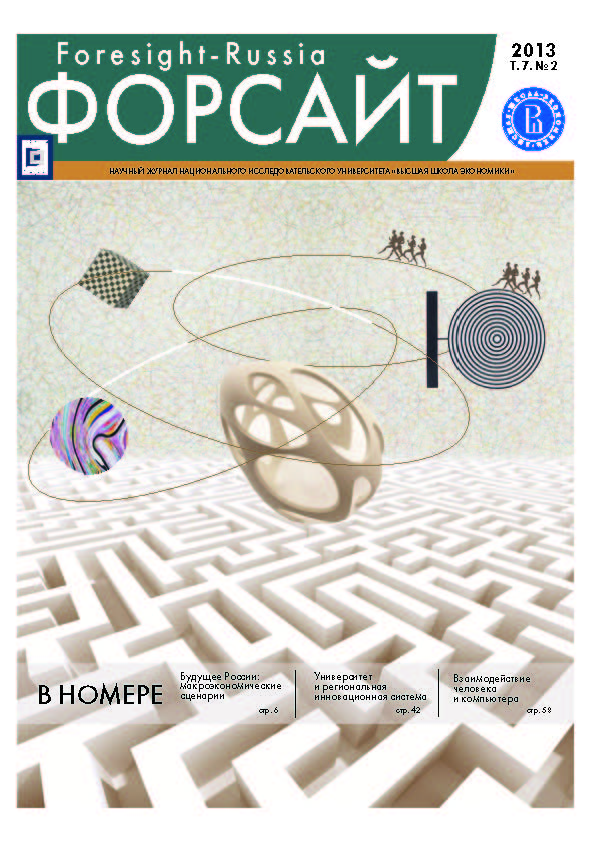Abstract
With information and communication technologies becoming an essential part of human life, the very nature of relations between human and computers is changing. Technologies are aimed at augmenting certain human values, but they may contradict with other values thus having adverse implications for quality of life. Is it possible to preserve key values in the face of such transformations? The solution of this vital question largely depends on research and development in Human-Computer Interaction (HCI) — an interdisciplinary field that has gained rapid development in recent decades.
This topic is of great concern to Microsoft. The paper summarizes the results of longstanding research conducted by the company in the field. It provides a historical overview of developing HCI research, their state-of-art and future outlook; analyses major trends that radically transform relations between human and technology, related opportunities, risks and relevant issues for R&D. Then, it sets out recommendations on reforming the HCI sphere so that it could provide a relevant response to future challenges. First, it is suggested that the way that user-centered research and design is conducted be extended by including another stage of conceptual analysis that explicitly addresses ethical, social and political implications of unfolding trends. A second way forward is to strengthen focus on interdisciplinary facets of Human-Computer Interaction. This presumes elaboration of a lingua franca that enables analyzing emergent transformations, and exploring how to steer them in “human” directions. It is important to define a set of immutable values that are vital for supporting human identity. These values should retain a dominant position in the flux of continuing technology-driven transformations.
References
Buxton B. (2007) Sketching User Experience: Getting the Design Right and the Right Design. San Francisco: Morgan Kaufmann.
Card S., Moran T., Newell A. (1984) The Psychology of Human-Computer Interaction. Hillsdale, New Jersey: Lawrence Erlbaum.
Carroll J.M. (ed.) (2002) Human-Computer Interaction in the New Millennium. New York: ACM Press.
Cox G. (1999) The Digital Crowd: Some Questions on Globalization and Agency//Design Issues. Vol. 15. № 1. P. 16-25.
Dix A., Finlay J., Abowd G., Beale R. (2003) Human-Computer Interaction (3rd ed.). Prentice Hall.
Erickson T., McDonald D.W. (2008) HCI Remixed. Reflections on Works That Have Influenced the HCI Community. Boston: MIT Press.
Fitts P. (1954) The information capacity of the human motor system in controlling amplitude of movement//Journal of Experimental Psychology. Vol. 47. P. 381-391.
Gillan A. (2007) MoD issues gag order on armed forces: New restrictions on blogs, emails, websites and text messages//The Guardian (10 August). Режим доступа: http://www.guardian.co.uk/uk/2007/aug/10/military.digitalmedia (дата обращения 23 апреля 2013 г.).
Gray W.D., John B.E., Stuart R., Lawrence D., Atwood M.E. (1995) GOMS meets the phone company: Analytic modelling applied to real world problems//Readings in Human Computer Interaction: Towards the Year 2000/Eds. R. Baecker, J. Grudin, W. Buxton, S. Greenberg. San Francisco: Morgan-Kaufmann. P. 634-639.
Grudin J. (2007) A Moving Target: The Evolution of Human-Computer Interaction//Human-Computer Interaction Handbook: Fundamentals, Evolving Technologies and Emerging Applications/Eds. A. Sears, J. Jacko. Mahwah, New Jersey: Lawrence Erlbaum Associates. P. 1-24.
Harper R., Randall D., Smyth N., Evans C., Heledd L., Moore R. (2007) Thanks for the memory//Interact: HCI 2007. Vol. 2 (September). Lancaster: British Computer Society. P. 39-43.
Harper R., Randall D., Smyth N., Evans C., Heledd L., Moore R. (2008) The past is a different place: They do things differently there//Proceedings of the 7th ACM Conference on Designing Interactive Systems. New York: ACM Press. P. 271-280.
Harrison S., Tatar D., Sengers P. (2007) The Three Paradigms of HCI//Proceedings of the 7th ACM Conference on Designing Interactive Systems. New York: ACM Press. P. 1-18. Режим доступа: http://people.cs.vt.edu/~srh/Downloads/TheThreeParadigmsofHCI.pdf (дата обращения 22 марта 2013 г.).
Herman D. (2007) Second Life stats (February). Linden Lab. Режим доступа: http://www.slideshare.net/gregverdino/darren-hermans-second-life-stats (дата обращения 17 апреля 2013 г.).
Jones J., Marsden G. (2005) Mobile Interaction Design. London: Wiley & Sons.
McCarthy J., Wright P. (2004) Technology as Experience. Boston: MIT Press.
Metz R. (2012) Augmented Reality Is Finally Getting Real//MIT Technology Review (2 August). Режим доступа: http://www.technologyreview.com/news/428654/augmented-reality-is-finally-getting-real/(дата обращения 09 марта 2013 г.).
Microsoft Research (2008) Being Human: Human-Computer Interaction in the Year 2020/Eds. R. Harper, T. Rodden, Y. Rogers, A. Sellen. Cambridge, UK: Microsoft Research Ltd.
Perkins E. (2010) Know Your Rental Car Age Restrictions in Europe. Режим доступа: http://www.smartertravel.com/travel-advice/know-your-rental-car-age-restrictions-in-europe.html?id=4577096 (дата обращения 19 марта 2013 г.).
Raskin J. (2000) The Humane Interface: New directions for designing interactive systems. Boston: Addison-Wesley.
Rogers Y., Sharp H., Preece J. (2007) Interaction Design: Beyond Human Computer Interaction (2nd ed.). Hoboken, New Jersey: Wiley.
Virata J. (2007) Disney Mobile Family phones: Disney puts together family friendly mobile phone service. Режим доступа: http://www.consumerelectronicsnet.com/article/Disney-Mobile-Family-phones-100818 (дата обращения 04 мая 2013 г.).

This work is licensed under a Creative Commons Attribution 4.0 International License.

